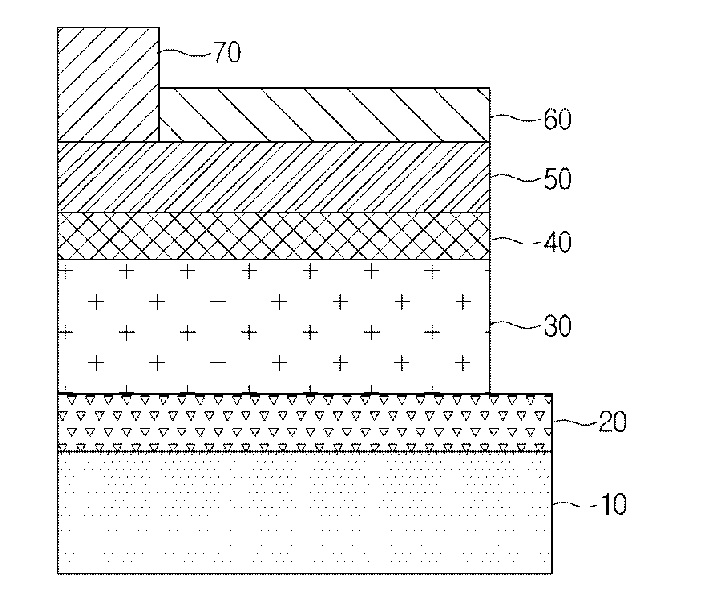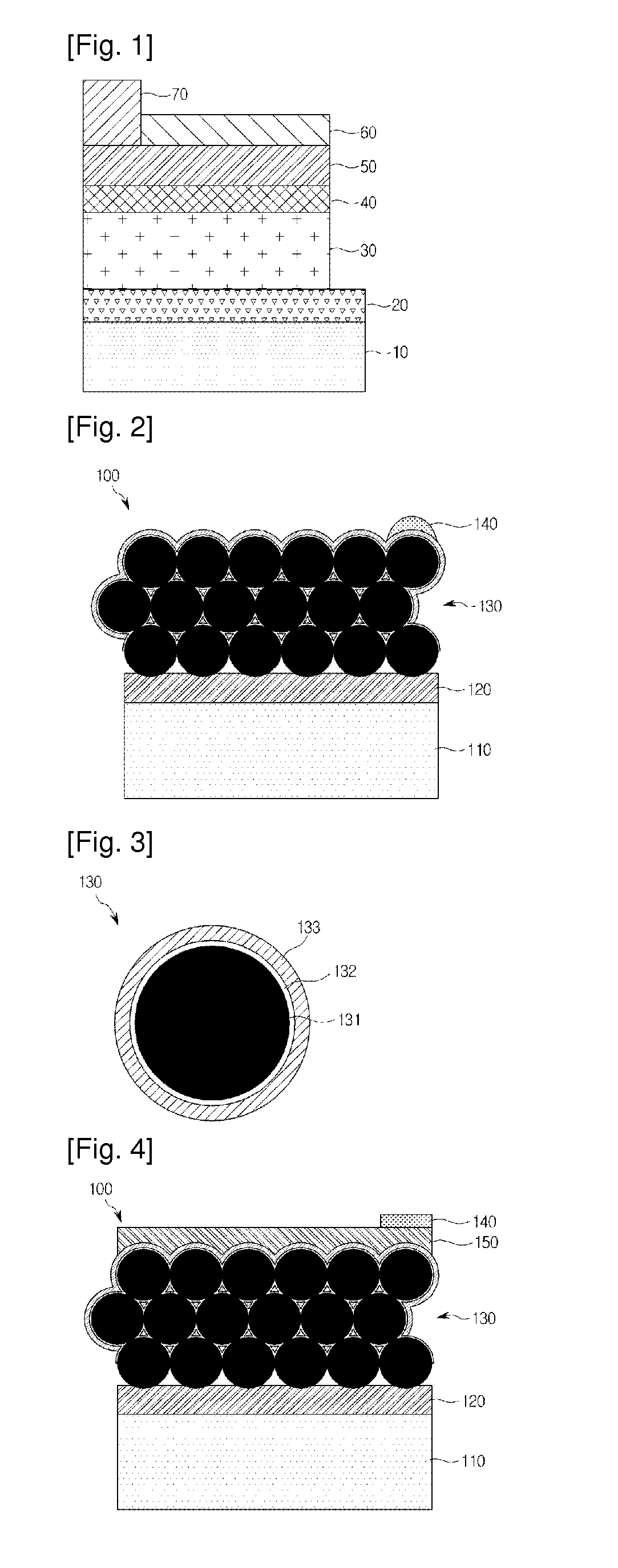Bulk heterojunction solar cell and method of manufacturing the same
a solar cell and heterojunction technology, applied in the field of bulk heterojunction solar cells, can solve the problems of low efficiency, poisonous cd itself, large difference between lattice constants and energy band gaps between two materials, etc., and achieve the effect of reducing manufacturing costs and greatly increasing the power output of solar cells
- Summary
- Abstract
- Description
- Claims
- Application Information
AI Technical Summary
Benefits of technology
Problems solved by technology
Method used
Image
Examples
Embodiment Construction
[0045]The present invention will now be described more fully with reference to the accompanying drawings, in which exemplary embodiments of the invention are shown. First, terms or words used in the present specification and the claims should not be construed as being limited to general or literal meaning, and the inventor should construe his / her own invention in meaning and concept that coincide with the technical spirit of the invention based on the principle for properly defining the concept of the terms so as to describe his / her own invention in the best manner.
[0046]Thus, configurations shown in embodiments and the drawings of the present invention rather are an example of the most exemplary embodiment and does not represent all of the technical spirit of the invention. Thus, it will be understood that various equivalents and modifications that replace the configurations are possible when filing the present application.
[0047]Hereinafter, a bulk heterojunction solar cell 100 acc...
PUM
| Property | Measurement | Unit |
|---|---|---|
| thickness | aaaaa | aaaaa |
| thickness | aaaaa | aaaaa |
| thickness | aaaaa | aaaaa |
Abstract
Description
Claims
Application Information
 Login to View More
Login to View More - R&D
- Intellectual Property
- Life Sciences
- Materials
- Tech Scout
- Unparalleled Data Quality
- Higher Quality Content
- 60% Fewer Hallucinations
Browse by: Latest US Patents, China's latest patents, Technical Efficacy Thesaurus, Application Domain, Technology Topic, Popular Technical Reports.
© 2025 PatSnap. All rights reserved.Legal|Privacy policy|Modern Slavery Act Transparency Statement|Sitemap|About US| Contact US: help@patsnap.com



